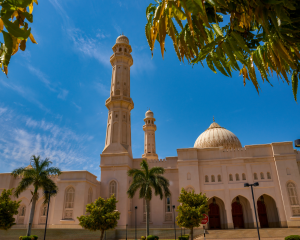Table of Contents
Are you curious about the black camels of Oman? These striking animals are a rare and valuable breed that has been part of Oman’s cultural heritage for centuries. In this article, we’ll explore the history, characteristics, and cultural significance of black camels in Oman, as well as some tips for seeing them during your visit.
History of Black Camels in Oman
Camels have been domesticated in Arabia and surrounding regions for thousands of years, providing transportation, milk, meat, and hides to nomadic tribes and settled communities. In Oman, camels have played a vital role in the country’s economy, society, and folklore. The Arabian camel or dromedary (Camelus dromedarius) is the most common type of camel in Oman, but there are also two rare breeds: the white camel and the black camel.
The black camel is a distinct breed that is highly prized by Omani herders and breeders. Its black coat, which ranges from dark brown to shiny black, is a result of genetic variations that increase the production of melanin, a pigment that protects the skin from sunburn and helps retain body heat. Black camels also have other features that distinguish them from other camels, such as longer and curlier hair, thicker lips, and a more angular head.
Cultural Significance of Black Camels in Oman
In Oman, black camels are not only valued for their physical traits, but also for their symbolic and spiritual meanings. They are often associated with wealth, power, and prestige, and are a status symbol for wealthy families and tribes. Black camels are also used in traditional rituals and celebrations, such as weddings, festivals, and religious events. During these occasions, black camels are adorned with colorful decorations, such as tassels, bells, and henna paintings, and are paraded or raced to showcase their beauty and agility.
In addition, black camels have inspired many legends, poems, and songs in Omani folklore. They are often portrayed as majestic creatures that embody the spirit of the desert, and are associated with heroic figures and epic journeys. For example, the famous Omani warrior and poet, Saif Al-Rahbi, wrote a poem about his black camel, Al-Rahba, which he rode in battles and adventures. The poem praises the camel’s speed, stamina, and loyalty, and describes it as a “precious jewel” and a “beloved companion.”
Where to See Black Camels in Oman
If you’re interested in seeing black camels during your visit to Oman, there are several places where you can find them. One of the best options is the annual Salalah Camel Beauty Pageant, which takes place in Salalah, the capital of the southern Dhofar region, in August or September. This event attracts thousands of camels from all over Oman and neighboring countries, and features competitions for the best-looking, fastest, and most obedient camels, including black camels. During spring season also known as serb it is very popular to drink camel milk in a special way. The ma’atheeb milk is prepared with pebbles heated over the fire. Once the pebbles are hot enough, they are thrown in the pot of camel milk and served after the milk is boiling.
Another option is to visit a camel farm or market, where you can interact with local herders and breeders and learn more about the camel culture in Oman. Some recommended places are the Nizwa Livestock Market, the Al Awabi Camel Market, and the Al Mazyona Camel Farm. However, it’s important to respect the local customs and etiquette when visiting these places, and to avoid taking photos without permission or touching the camels without supervision.
The black camels of Oman are a fascinating and rare breed that reflect the country’s rich heritage and culture. Whether you’re a nature lover, a history buff, or a cultural explorer, seeing these majestic animals can be a memorable and
You want to see black camels?
Come and join us to the desert sunset tour and meet the fascinating black camels on the way to the desert. Book now or contact us for more information



